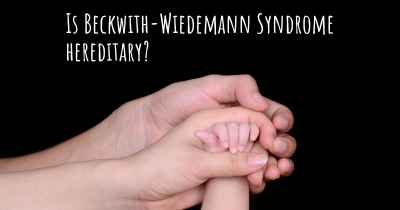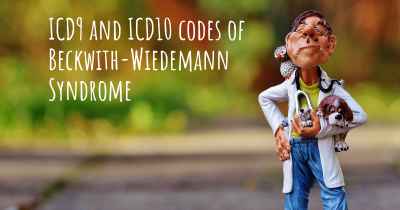What is the history of Beckwith-Wiedemann Syndrome?
When was Beckwith-Wiedemann Syndrome discovered? What is the story of this discovery? Was it coincidence or not?

Beckwith-Wiedemann Syndrome (BWS) is a rare genetic disorder that was first described in 1963 by two physicians, Dr. J. Bruce Beckwith and Dr. Hans-Rudolf Wiedemann. The syndrome is named after these two doctors who independently reported cases of infants with similar characteristics.
BWS is caused by various genetic abnormalities, most commonly involving a region on chromosome 11 known as 11p15.5. This region contains several genes that are involved in regulating growth and development. The specific genetic changes that lead to BWS can vary among individuals, but they all result in an overgrowth disorder.
The history of BWS can be traced back to the mid-20th century when Dr. Beckwith and Dr. Wiedemann separately observed a group of infants with similar physical features and medical complications. They both recognized that these cases represented a distinct syndrome and published their findings.
Over the years, further research and clinical observations have expanded our understanding of BWS. In the 1980s, scientists discovered that a specific region on chromosome 11 was consistently involved in BWS cases. This breakthrough allowed for more accurate diagnosis and genetic testing.
One of the key features of BWS is overgrowth, which can manifest as macrosomia (large body size) at birth. Infants with BWS often have an enlarged tongue (macroglossia), abdominal wall defects (such as omphalocele or umbilical hernia), and visceromegaly (enlarged organs).
Another important aspect of BWS is the increased risk of developing certain tumors. The most common tumor associated with BWS is Wilms tumor, a kidney cancer that primarily affects children. Other tumors that can occur in individuals with BWS include hepatoblastoma (liver cancer), neuroblastoma (nerve tissue cancer), and rhabdomyosarcoma (soft tissue cancer).
Advancements in genetic testing have allowed for more accurate diagnosis and improved understanding of BWS. Today, healthcare professionals can identify specific genetic changes associated with BWS in the majority of cases. This has enabled better genetic counseling for affected families and facilitated early detection of associated tumors.
Treatment for BWS is primarily focused on managing the associated symptoms and complications. This may involve surgical interventions to correct abdominal wall defects or reduce the size of an enlarged tongue. Regular monitoring for tumor development is also crucial, as early detection can significantly improve outcomes.
In conclusion, Beckwith-Wiedemann Syndrome is a rare genetic disorder that was first described in the 1960s. It is characterized by overgrowth and an increased risk of developing certain tumors. The identification of genetic abnormalities on chromosome 11 has greatly improved diagnosis and understanding of the syndrome. Ongoing research continues to enhance our knowledge of BWS and improve treatment options for affected individuals.








